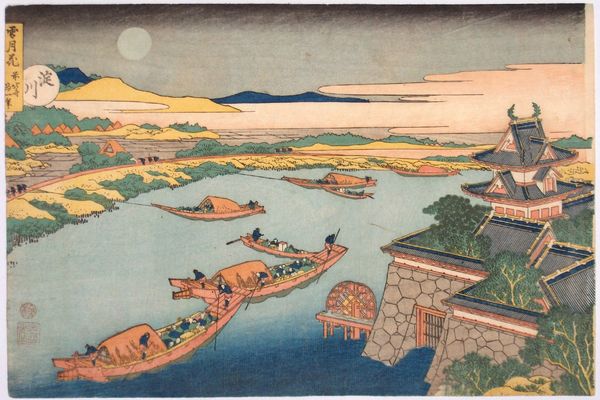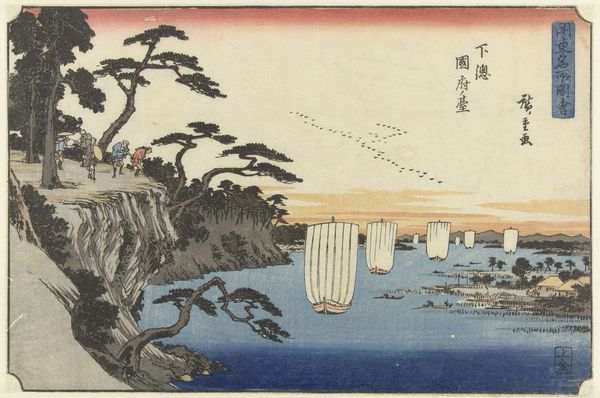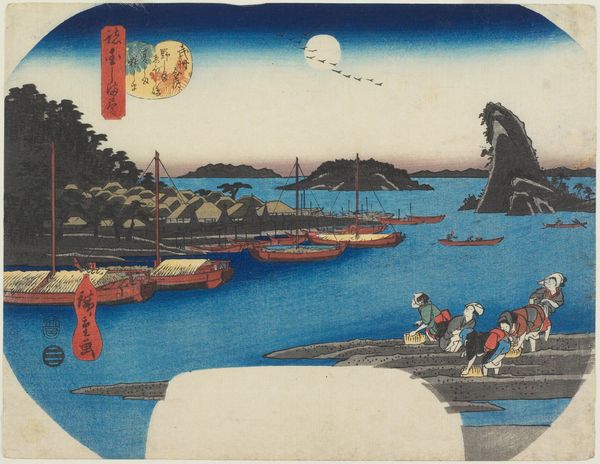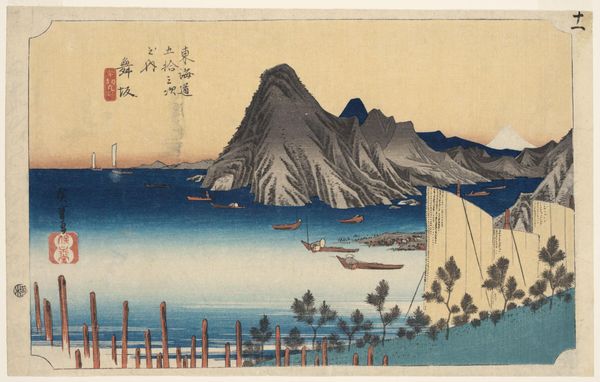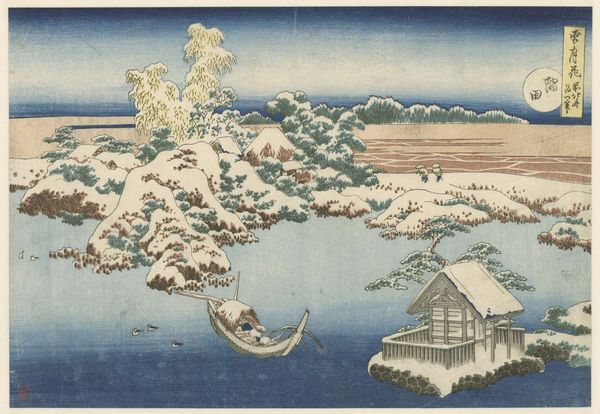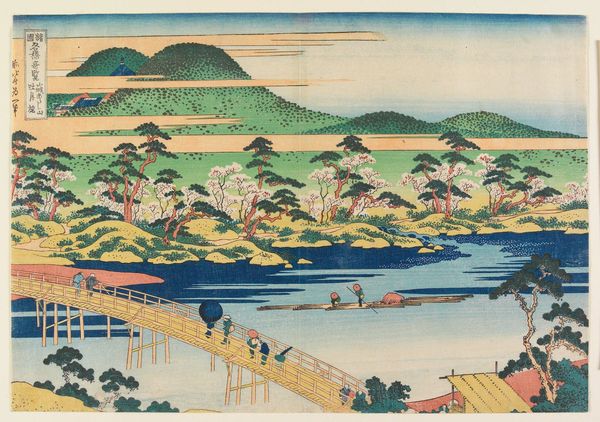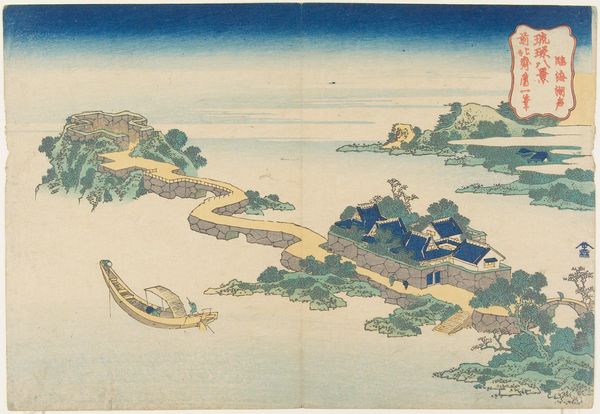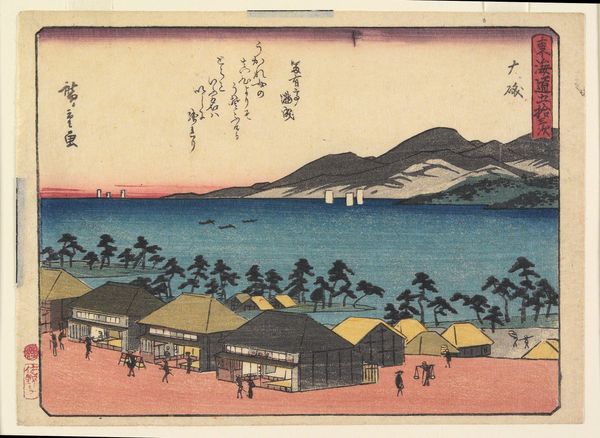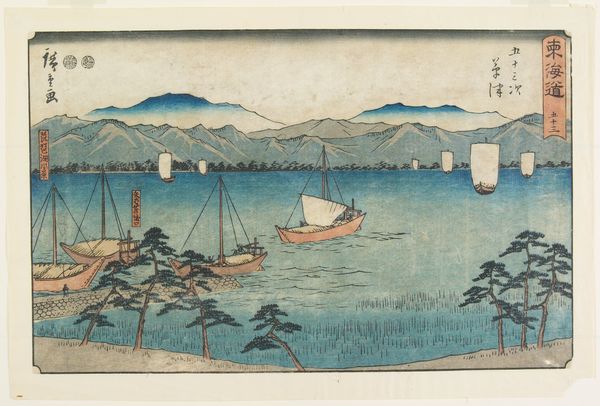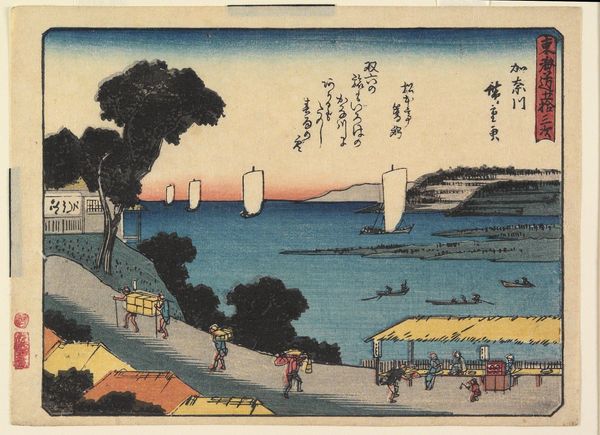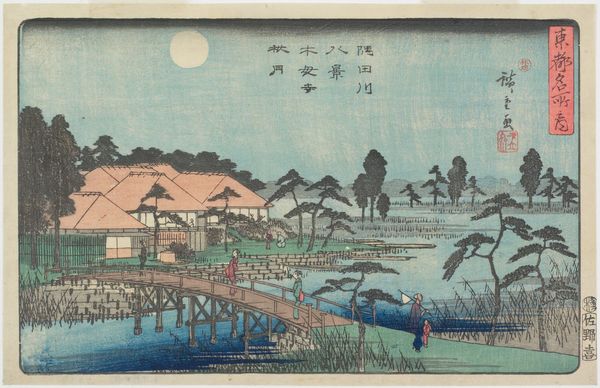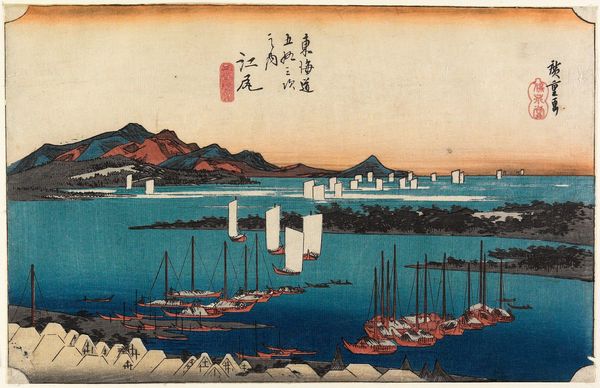
print, woodblock-print
# print
#
asian-art
#
landscape
#
river
#
ukiyo-e
#
woodblock-print
#
orientalism
Dimensions: height 250 mm, width 366 mm
Copyright: Rijks Museum: Open Domain
Editor: Hokusai’s “De Yodo rivier in maanlicht”, made sometime between 1831 and 1835, and displayed at the Rijksmuseum, is quite captivating! It's a woodblock print depicting boats traversing the river under the moon’s glow. What always strikes me is how calm the whole scene is. How do you interpret this work within the context of its time? Curator: The work appears serene, but it's vital to view it as a product and reflection of its society. During Hokusai's time, these Ukiyo-e prints were not simply art, but widely accessible consumer products. The mass production of these images changed the role of the artist in society, and how people viewed their surrounding landscapes. Note how this print makes a common scene– the river at night – available for purchase and widespread viewing. How might this accessibility change the perception of nature itself for the common person? Editor: That’s a really interesting point. It made art much more democratic, accessible beyond the elite, right? So, are you suggesting that prints like these not only mirrored society, but actually shaped social perspectives and perhaps even desires? Curator: Precisely! Prints could generate a shared national identity by disseminating idealized views and encouraging tourism or engagement with local landmarks and scenes. The artistic beauty is secondary to what is actually being offered through art - something far greater, as cultural identity and social change. What does this say about the politics of imagery, then? Editor: It emphasizes how powerful visual media can be in shaping and reinforcing social structures. It's fascinating to consider the broader impact, going beyond individual aesthetic enjoyment. Curator: Indeed. It's easy to admire Hokusai’s mastery, but recognizing his prints as socio-political objects is just as vital. They not only reflect but actively participate in shaping the cultural landscape. Editor: This has totally shifted my understanding of this print, thinking of it as an agent in the cultural narrative. I'll definitely view these Ukiyo-e prints differently from now on.
Comments
No comments
Be the first to comment and join the conversation on the ultimate creative platform.
